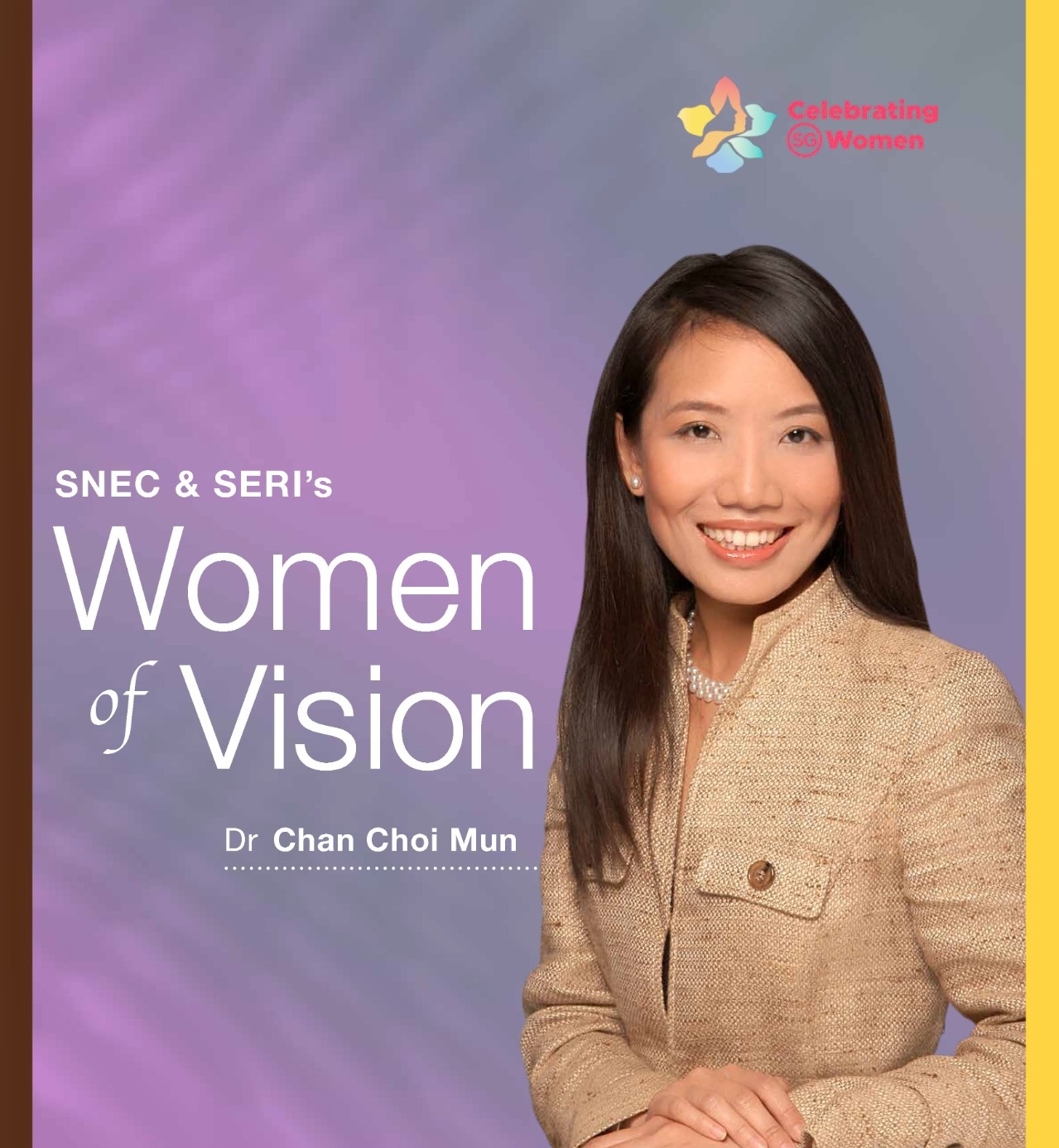Women of VisionCelebrating SG Women
In the Year of Celebrating SG Women, we present stories which showcase and celebrate women’s multi-faceted contributions and progress at SNEC and SERI.
Join us to honour and acknowledge our team of amazing women who have made impact in the field of Ophthalmology, inspiring those around them with their brand of ethos in life.

Dr Chan Choi Mun
Senior Consultant, Medical Retina Department, SNEC
Clinical Director, Electroretinography Service, SNEC
SNEC has many HODs/Directors who are women. How does it feel to be part of this leadership team?
I have always been proud to be associated with SNEC. I chose SNEC when I was starting my ophthalmology training back in the old days when trainees were still called BSTs or ASTs. That’s Basic or Advanced Surgical Trainees, respectively. To be involved in making plans and decisions that impact the future of SNEC is extremely meaningful and rewarding for me, and I hope to be able to contribute meaningfully.
What were the biggest obstacles you had to overcome? Did you ever have the impression that things would be easier had you been male?
It was definitely tough juggling full-time work with having to do calls and take postgraduate specialist examinations. Then there are conflicts at work. It might have been easier to manage such problems for a man, as most people can accept a man being authoritative and demanding. In contrast, women are expected to be more motherly and understanding. This trait can work when dealing with certain patients — namely, those with inherited retinal or macular dystrophies, which are degenerative and progressive conditions where patients have worsening vision and loss of peripheral visual fields. You need genuine empathy and concern for these patients — sometimes explaining the condition to the patient and family repeatedly, particularly why the vision continues to deteriorate and is not significantly improved by spectacles or cataract surgery. Patients and their families can pick up on how sincere you are, and they appreciate it when you truly care. It’s probably easier being a female doctor when interacting with such patients, especially if they are children, since the impression is that females are more caring and motherly.
How do you balance career and family?
It can be tricky balancing family and work, especially if you have young children. When I went for my overseas fellowship, my mother and nine-month-old son flew with me first. It was only later, when my helper’s visa was approved, that she and my then three-year-old daughter could join me. Before that, I had to endure the separation from my daughter! Now that my children are older, there are homework and exams to deal with, and those tasks still mostly fall to me, as their mother, to manage!
What exciting developments can we expect to see in five to 10 years in your area of expertise?
Medical retina as a subspecialty has evolved at a breathtaking rate in the past 15 years, particularly with the use of anti-VEGF agents for the management of age-related macular degeneration (AMD) and centre-involving diabetic macula oedema. Prior to that, patients with AMD would likely only be offered treatment like laser, which had a lot of limitations and could lead to scarring, resulting in most patients eventually losing their vision. Another exciting area I am involved in is managing patients with inherited retinal or macular dystrophies. As recently as five years ago, this was a field most ophthalmologists would prefer not to manage as there was no treatment — it was depressing for both doctor and patient as nothing could be done about the patient’s worsening vision. Today, we have an integrated comprehensive clinic for such patients, with multimodal imaging, visual field testing, and electrophysiology, as well as support services in the form of a low-vision clinic and referrals to the relevant support services. Significantly, we now offer genetic counselling and genetic testing to patients and family members looking for the causative mutation. This helps with confirming the diagnosis and, potentially, family planning. This means that we can now offer our patients hope, something which cannot be underestimated.
Click
here to check out the
Women of Vision series.
